
How to Use STM32F746GDISCO: Examples, Pinouts, and Specs
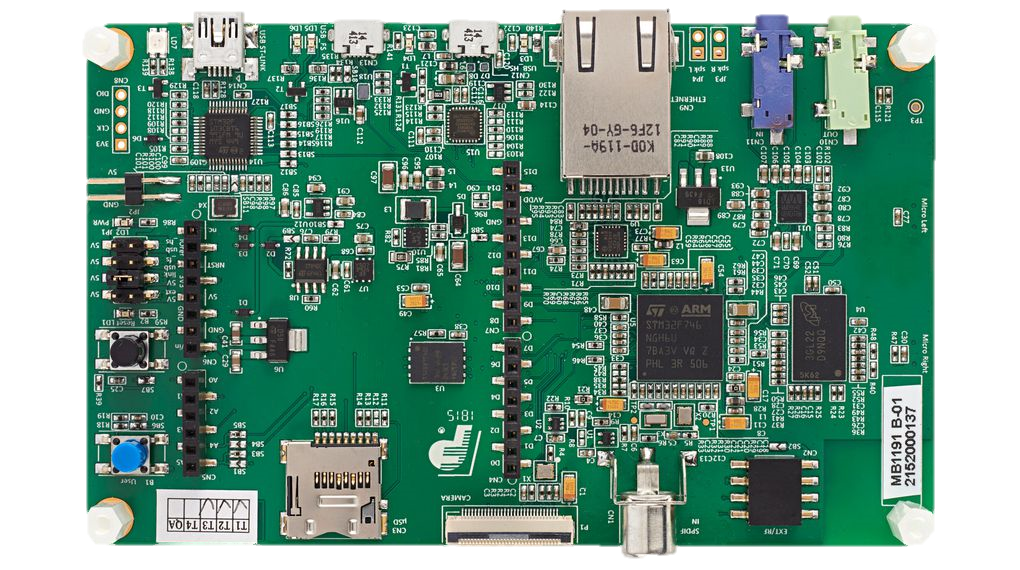
 Design with STM32F746GDISCO in Cirkit Designer
Design with STM32F746GDISCO in Cirkit DesignerIntroduction
The STM32F746G-DISCO is a discovery board developed by STMicroelectronics, featuring the STM32F746NG microcontroller. This microcontroller is based on the high-performance ARM Cortex-M7 core, operating at up to 216 MHz. The board is designed to simplify the development and prototyping of embedded applications, offering a wide range of integrated peripherals, including a 4.3-inch TFT LCD with capacitive touch, audio codec, MEMS microphone, and various connectivity options.
Explore Projects Built with STM32F746GDISCO
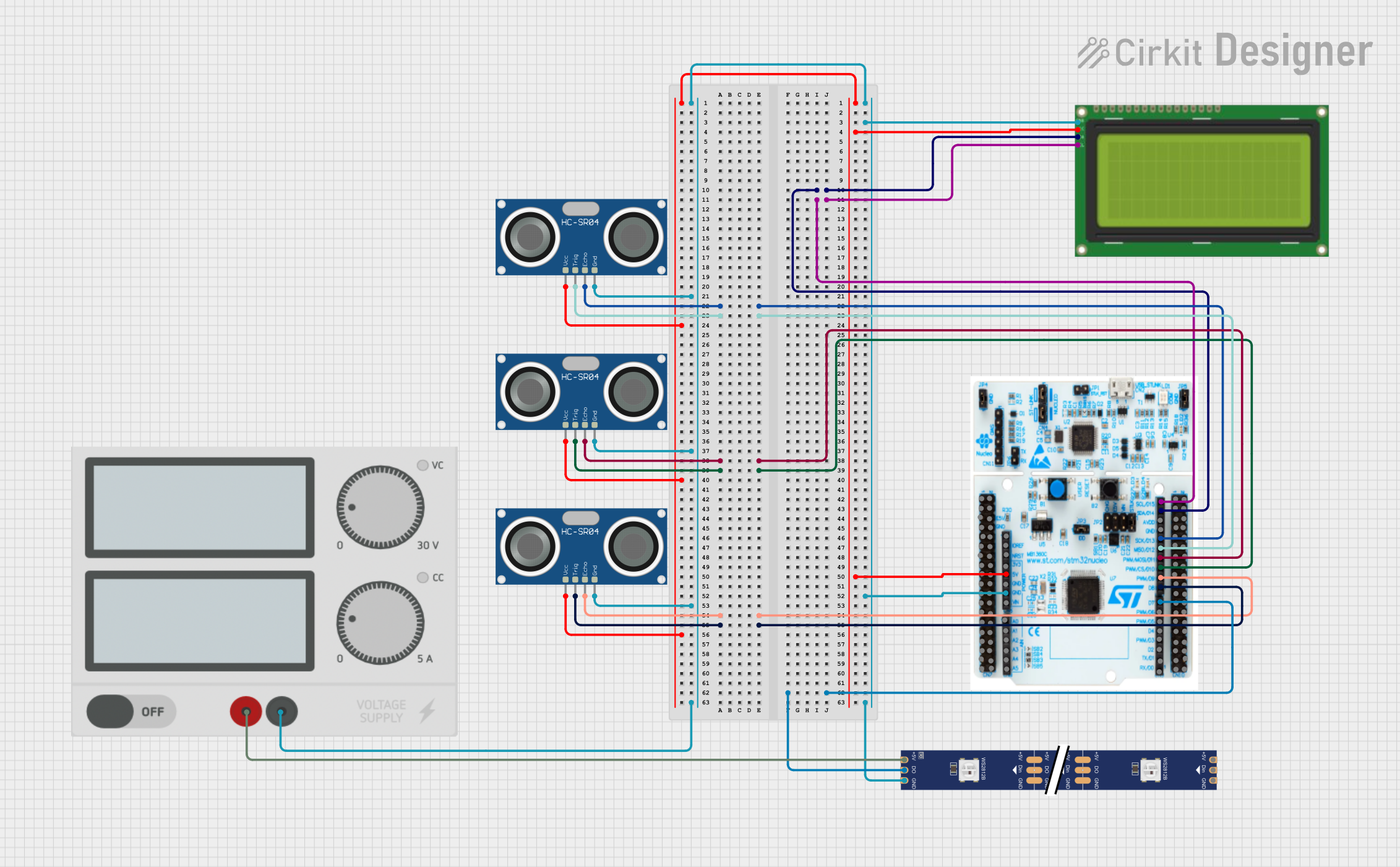
 Open Project in Cirkit Designer
Open Project in Cirkit Designer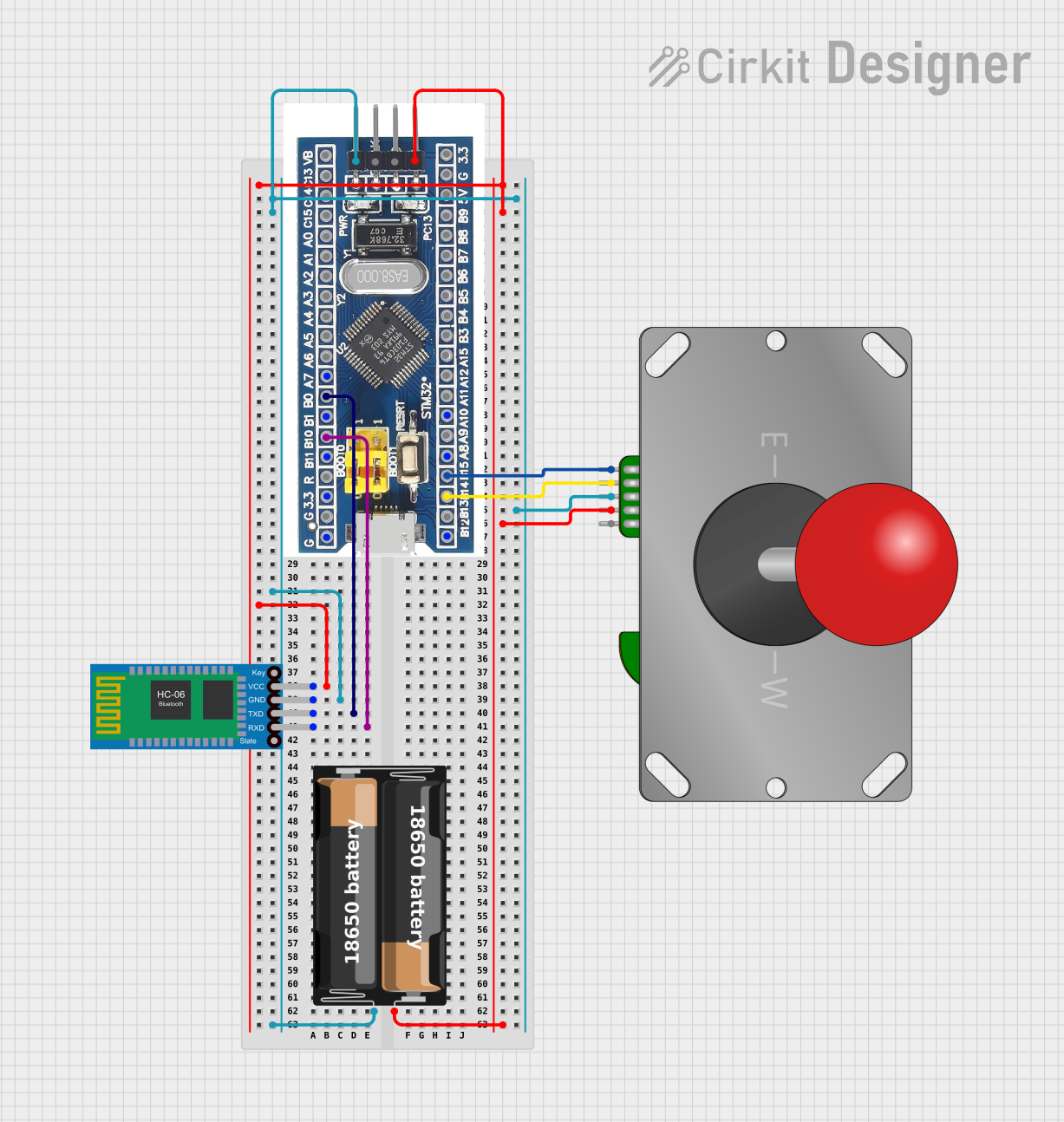
 Open Project in Cirkit Designer
Open Project in Cirkit Designer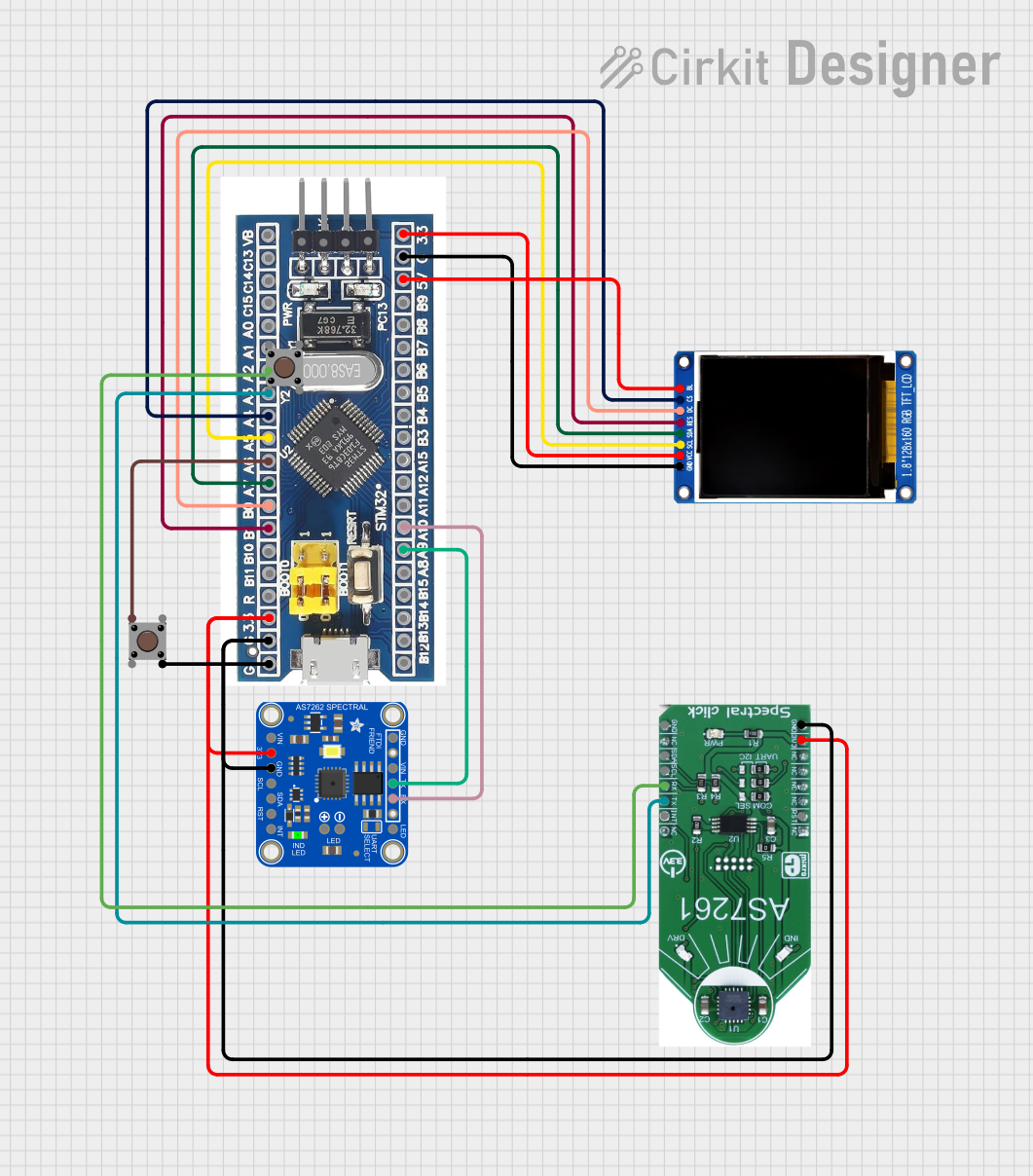
 Open Project in Cirkit Designer
Open Project in Cirkit Designer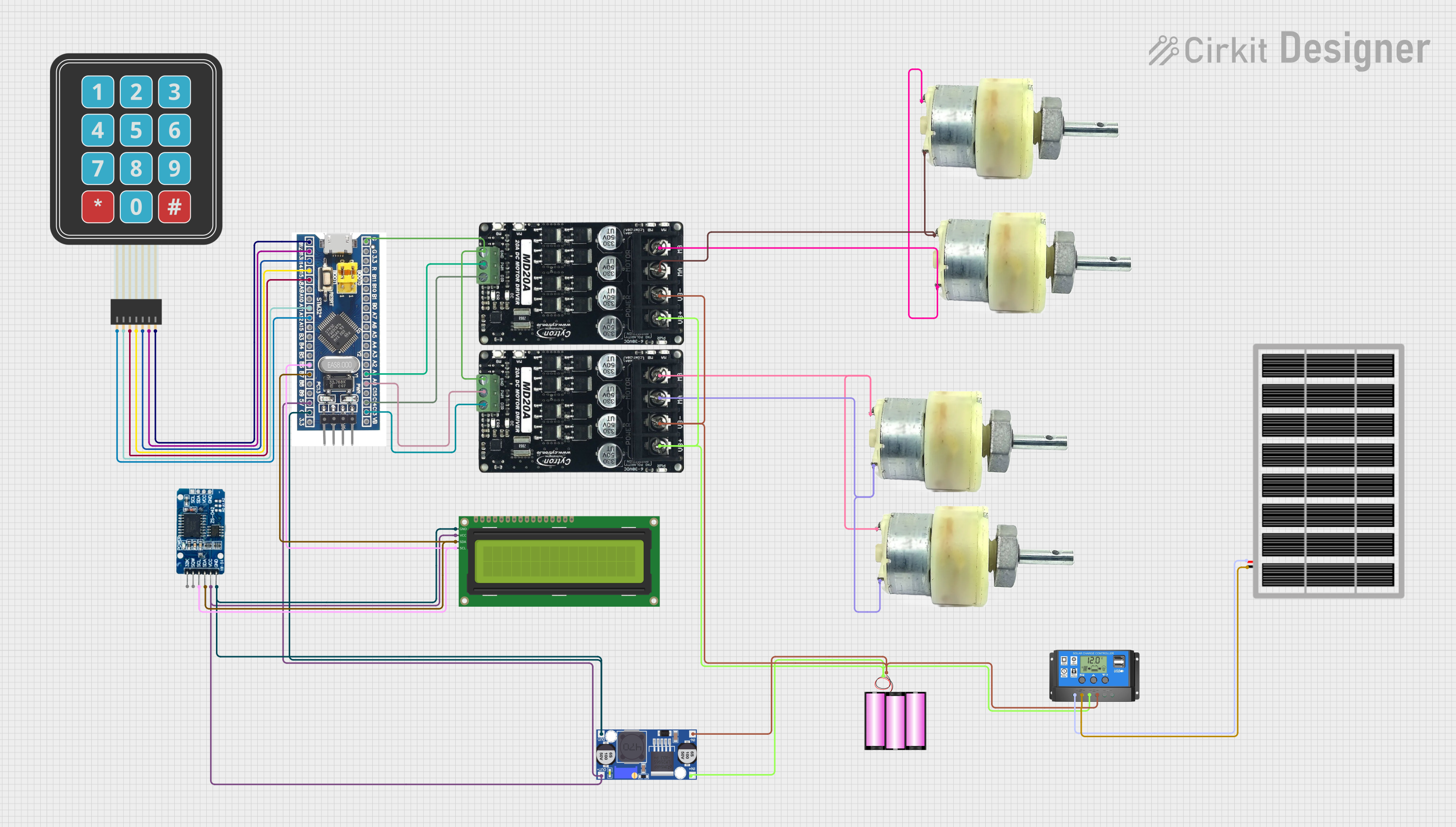
 Open Project in Cirkit Designer
Open Project in Cirkit DesignerExplore Projects Built with STM32F746GDISCO

 Open Project in Cirkit Designer
Open Project in Cirkit Designer
 Open Project in Cirkit Designer
Open Project in Cirkit Designer
 Open Project in Cirkit Designer
Open Project in Cirkit Designer
 Open Project in Cirkit Designer
Open Project in Cirkit DesignerCommon Applications and Use Cases
- Graphical user interface (GUI) development
- Audio processing and playback
- IoT and connected devices
- Sensor-based applications
- Prototyping for industrial and consumer electronics
Technical Specifications
Key Technical Details
| Feature | Specification |
|---|---|
| Microcontroller | STM32F746NGH6 (ARM Cortex-M7, 32-bit, 216 MHz) |
| Flash Memory | 1 MB |
| RAM | 320 KB |
| LCD Display | 4.3-inch TFT LCD with capacitive touch (480x272 resolution) |
| Audio Codec | WM8994ECS/R with stereo audio output and input |
| Connectivity | USB OTG FS, Ethernet, microSD card slot |
| Sensors | ST MEMS microphone (MP34DT01) |
| Debugging | ST-LINK/V2-1 debugger/programmer integrated |
| Power Supply | USB-powered (5V) or external power supply (7V-12V via VIN pin) |
| Dimensions | 154 mm x 86 mm |
Pin Configuration and Descriptions
The STM32F746G-DISCO board provides access to the STM32F746NG microcontroller's GPIO pins via headers. Below is a summary of the key pin configurations:
GPIO Header Pinout
| Pin Number | Pin Name | Functionality | Notes |
|---|---|---|---|
| 1 | 3V3 | 3.3V Power Output | Provides 3.3V for external components |
| 2 | GND | Ground | Common ground for the circuit |
| 3 | PA0 | GPIO, ADC Input, WKUP1 | Configurable as digital/analog input |
| 4 | PA1 | GPIO, ADC Input | Configurable as digital/analog input |
| 5 | PB6 | GPIO, I2C1_SCL | I2C clock line |
| 6 | PB7 | GPIO, I2C1_SDA | I2C data line |
| 7 | PC10 | GPIO, UART4_TX | UART transmit |
| 8 | PC11 | GPIO, UART4_RX | UART receive |
| 9 | PD12 | GPIO, PWM Output | Can be used for PWM signals |
| 10 | PD13 | GPIO, PWM Output | Can be used for PWM signals |
Additional Interfaces
| Interface | Description |
|---|---|
| USB OTG FS | USB Full-Speed interface for device/host communication |
| Ethernet | 10/100 Mbps Ethernet interface |
| microSD Slot | Supports microSD cards for data storage |
| Audio Jack | 3.5mm stereo audio output |
Usage Instructions
How to Use the STM32F746G-DISCO in a Circuit
Powering the Board:
- Connect the board to a PC using a micro-USB cable for power and programming.
- Alternatively, use an external power supply (7V-12V) via the VIN pin.
Programming the Board:
- Use the integrated ST-LINK/V2-1 debugger to program the microcontroller.
- Compatible IDEs include STM32CubeIDE, Keil MDK, and IAR Embedded Workbench.
Connecting Peripherals:
- Use the GPIO headers to connect external sensors, actuators, or other devices.
- For audio applications, connect headphones or speakers to the 3.5mm audio jack.
Using the LCD Display:
- The 4.3-inch TFT LCD can be used for graphical interfaces.
- Libraries such as TouchGFX or STM32CubeF7 provide tools for GUI development.
Using the microSD Slot:
- Insert a microSD card for data logging or file storage.
- Use the FATFS library for file system management.
Important Considerations and Best Practices
- Voltage Levels: Ensure that external components connected to GPIO pins operate at 3.3V logic levels to avoid damage.
- Clock Configuration: Properly configure the system clock in your firmware to utilize the full performance of the Cortex-M7 core.
- Peripheral Initialization: Use the STM32 HAL (Hardware Abstraction Layer) or LL (Low Layer) drivers to initialize peripherals.
- Debugging: Use the integrated ST-LINK/V2-1 for debugging and real-time variable monitoring.
Example Code for Arduino IDE
The STM32F746G-DISCO can be programmed using the Arduino IDE with the STM32 core installed. Below is an example of toggling an LED connected to pin PA0:
// Include the STM32 HAL library
#include <STM32F7xx.h>
// Define the LED pin
#define LED_PIN PA0
void setup() {
// Initialize the LED pin as an output
pinMode(LED_PIN, OUTPUT);
}
void loop() {
// Toggle the LED on and off
digitalWrite(LED_PIN, HIGH); // Turn the LED on
delay(500); // Wait for 500 ms
digitalWrite(LED_PIN, LOW); // Turn the LED off
delay(500); // Wait for 500 ms
}
Troubleshooting and FAQs
Common Issues and Solutions
The board does not power on:
- Ensure the USB cable is properly connected and functional.
- If using an external power supply, verify the voltage is within the 7V-12V range.
Unable to program the board:
- Check that the ST-LINK/V2-1 driver is installed on your PC.
- Ensure the board is in programming mode and the correct COM port is selected.
LCD display is not working:
- Verify that the LCD initialization code is included in your firmware.
- Check the ribbon cable connection between the LCD and the board.
GPIO pins are not responding:
- Confirm that the pins are correctly configured in your code (input/output mode).
- Ensure external components connected to the pins are functional.
FAQs
Q: Can I use the STM32F746G-DISCO for IoT applications?
A: Yes, the board supports Ethernet and USB connectivity, making it suitable for IoT projects. You can also add Wi-Fi or Bluetooth modules via GPIO or UART.
Q: Is the board compatible with Arduino libraries?
A: With the STM32 core installed in the Arduino IDE, you can use many Arduino libraries, but some may require modifications for compatibility.
Q: How do I update the ST-LINK firmware?
A: Use the ST-LINK Utility software provided by STMicroelectronics to update the firmware.
Q: Can I use the board for audio processing?
A: Yes, the integrated audio codec and MEMS microphone make it ideal for audio applications such as voice recognition or playback.